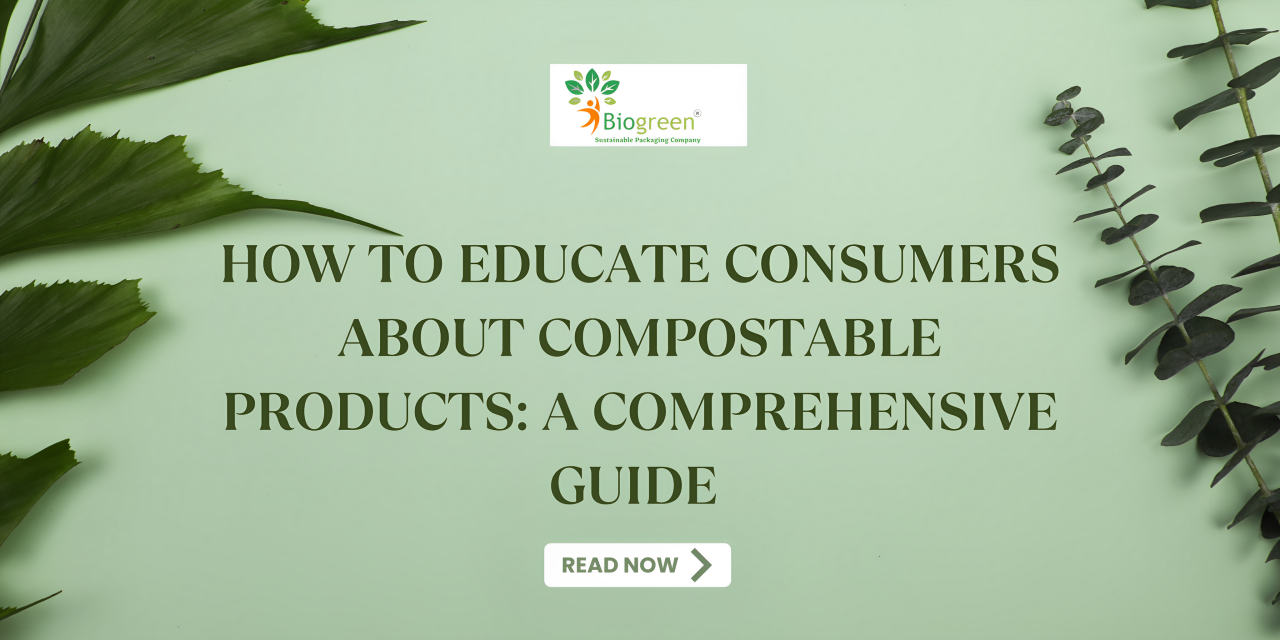Introduction
In the present world, organizations as well as consumers are becoming concerned about sustainability in a major way. Products that are made from compostable substances can provide sustainable alternatives to usual plastic and other such non-biodegradable materials. Nevertheless, these compostable things must be used correctly to maximize their benefits, and consumers’ understanding of them is imperative. This guide targets enlightening customers on general compostable products, including who they are, their significance and use recommendations.
Which Products Are Compostable?
Compostable products are designed to break down into their constituent elements in a composting environment naturally without leaving any toxic byproducts behind. Typically, organic materials such as corn starch, sugarcane, or bamboo are utilized in the production of these entities. Unlike biodegradable things, compostable things disintegrate under the right conditions relatively quickly and turn into richly nutritious compost matter that is good for the soil.
Why Inform Customers About Products That Can Be Composted?
There are various reasons for educating customers about compostable products. It not only tells them how to use and dispose of it properly, which can reduce waste accumulation to a great extent but also reduces pollution.
Customer Knowledge: Most customers do not understand the difference between recyclable, biodegradable, and compostable products.
Behavioral Change: Education can help persuade or make an appeal to the customer to act environmentally friendly or make more sustainable decisions.
Achieving sustainability goals through increased use of biodegradable products by businesses and communities, and creating consumer awareness.
Recognizing Customer Attitudes
Understanding consumer mindsets and behaviors is crucial before putting instructional tactics into practice.
Consumers’ Awareness Levels: The degree of consumer awareness and knowledge of biodegradable products varies.
Perceived Benefits: Some customers may need to be made aware of the advantages biodegradable products have for the environment.
Convenience and Habits: Convenience frequently influences customer decisions, and breaking old habits can be difficult.
Trust and Skepticism: Customers may have doubts regarding the efficacy of biodegradable products and the environmental statements made about them.
Powerful Techniques for Informing Customers
A multi-pronged strategy is needed to educate people about biodegradable products. Here are a few successful tactics-
1. Labeling That Is Informative and Clear:
Make sure biodegradable products have easy-to-read labels that clearly explain their advantages and the correct way to dispose of them. Labels ought to state:
Logos for compostable certifications.
guidelines for using municipal composting facilities or composting at home.
details about the advantages using compostable items have on the environment.
2. Campaigns for Public Awareness:
To reach a large audience, start public awareness campaigns through a variety of media platforms. Campaigns may consist of videos and posts on social media.
advertisements on radio, television, and internet media.
blogs and articles that are educational in cooperation with environmental organizations and influential people.
3. Education within stores:
Place educational materials in retail establishments that sell biodegradable goods. This may consist of – posters and pamphlets with information.
displays that are interactive and explain biodegradable products.
educating customers through employee education in stores.
4. Workshops and Events for the Community:
Plan community activities and seminars to inform people about biodegradable items. Activities consist of- demonstrations of home composting techniques.
talks about the advantages of biodegradable goods.
interactive games for kids and families.
5. Collaborations with Academic Institutions and Schools:
Collaborate with educational establishments to include biodegradable product knowledge into their curricula. This can be accomplished by:
Activities and programs aimed toward education.
Sustainable projects and competitions were held in schools.
workshops and guest talks by environmental specialists.
6. Tutorials and Online Resources:
Provide and advertise web resources that offer comprehensive details about biodegradable goods. Resources may consist of – blogs and webpages with information.
7. Rewards Schemes:
Create reward schemes to entice customers to select biodegradable goods. Programs may consist of – Incentives or discounts for buying biodegradable goods.
Reward schemes for eco-friendly purchases.
Honors are bestowed on people or companies who actively encourage composting by the community.
Conclusion:
People need to be educated about biodegradables to give their share in conserving the environment and lessening environmental effects. Businesses, organizations, and communities can involve educating customers to make informed decisions themselves by understanding consumer mindset as well as effective teaching methodology implementation. If we take a complete approach, it can surely lead to awareness creation, making people adopt and eventually positively affect the environment.


